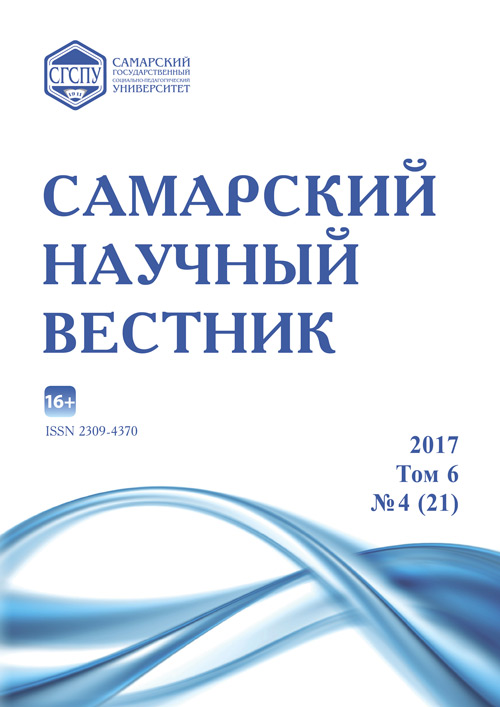Ранненеолитическая керамика Западной Беларуси: современное состояние и перспективы изучения
- Авторы: Ткачёв О.Ю.1
-
Учреждения:
- Институт истории НАН Беларуси
- Выпуск: Том 6, № 4 (2017)
- Страницы: 110-116
- Раздел: 07.00.00 – исторические науки и археология
- URL: https://journals.rcsi.science/2309-4370/article/view/22289
- DOI: https://doi.org/10.17816/snv201764201
- ID: 22289
Цитировать
Полный текст
Аннотация
В данной статье рассматривается ранненеолитическая керамика Западной Беларуси – тип Дубичай. Описываются основные черты, которые были характерны для неё. Среди них можно выделить: наличие органической примеси в тесте; пояс глубоких круглых ямок под краем венчика; наколы круглой палочки – «копытца»; тонкие прочерченные линии, которые располагались косо или образовывали косую сетку. Рассматриваются гипотезы о происхождении керамики типа Дубичай. В ареал распространения керамики типа Дубичай исследователи включают Белорусское Понёманье (без бассейна Вилии), левобережье Верхней Припяти, Южную Литву, часть Северо-Восточной Польши и север Волыни. В то же время Д.Я. Телегин, Е.Н. Титова, Г.В. Охрименко на территории Волыни выделяют волынскую культуру. Она по многим характеристикам схожа с припятско-нёманской культурой. Отличие ранненеолитической керамики с территории Западного Полесья и Волыни от дубичайской керамики Понёманья позволяет считать волынскую культуру не отдельной культурой, а локальным вариантом нёманской культуры. На памятниках Подляшья и Белорусского Побужья выявлена керамика типа Соколувэк. По морфологии и орнаментации она похожа на тип Дубичай, но в тесте органическая примесь незначительная. Скорее всего, она является результатом локального развития ранненеолитических традиций на западе ареала припятско-нёманской культуры.
Ключевые слова
Полный текст
Открыть статью на сайте журналаОб авторах
Олег Юрьевич Ткачёв
Институт истории НАН Беларуси
Автор, ответственный за переписку.
Email: aleh.tkachou@gmail.com
научный сотрудник отдела археологии первобытного общества
Белоруссия, МинскСписок литературы
- Чарняўскі М.М. Да пытання вылучэння прыпяцка-нёманскай культуры // Гістарычна-археалагічны зборнік, № 18, 2003. С. 25-33.
- Телегин Д.Я. Неолитические стоянки типа Струмеля-Гастятина северной Киевщины // Древности Белоруссии. Мн.: Наука и техника, 1966. С. 63-67.
- Чарняўскі М.М. Неаліт Беларускага Панямоння. Мн.: Навука і тэхніка, 1979. 144 с.
- Чарняўскі М.М. Неаліт з грабеньчата-накольчатай і накольчатай керамікай Заходняй Беларусі. Асаблівасці эвалюцыі // Od neolityzacji do początkуw epoki brązu. Przemiany kulturowe w międzyreczu Odry i Dniepru między VI i II tys. przed Chr. Poznań, 2001. S. 231-240.
- Girininkas A. Lietuvos archeologija. Т. 1: Akmens amžius. Vilnius: Versus aureus, 2009. 328 p.
- Чарняўскі М.М. Ранненеалітычная кераміка Заходняй Беларусі // Краязнаўчыя запіскі. Вып. 4. 1997. С. 106-114.
- Чернявский М.М. Ранненеолитическая культура Восточного Понеманья // Человек, адаптация, культура. М., Тула: Гриф и К, 2008. С. 297-306.
- Исаенко В.Ф. Неолит Припятского Полесья. Мн.: Наука и техника, 1976. 128 с.
- Чернявский М.М. Каменный и бронзовый века Понеманья и Подвинья // Белорусская археология. Достижения археологов за годы советской власти. Мн.: Наука и техника, 1987. С. 37-47.
- Исаенко В.Ф. Мезолит и неолит Припятского Полесья // Древности Белоруссии. Мн.: Наука и техника, 1966. С. 22-53.
- Исаенко В.Ф. Первобытные культуры Полесья // Белорусская археология. Достижения археологов за годы советской власти. Мн.: Наука и техника, 1987. С. 15-26.
- Гаскевич Д. Регіональні особливосці у неолітизаціï Прип’ятського Полісся // Гістарычна-археалагічны зборнік, № 16, 2001. С. 36-49.
- Чарняўскі М.М., Ісаенка У.Ф. Нёманская культура // Археалогія Беларусі. Т. 1. Каменны і бронзавы вякі. Мн.: Беларуская навука, 1997. С. 145-170.
- Чарняўскі М.М. Неаліт Беларусі: праблемы перыядызацыі і храналогіі // Wspуlnota dziedzictwa kulturowego ziem Białorusi i Polski. Warszawa, 2004. S. 99-118.
- Piliciauskas G. Dubiciu tipo gyvenvietes ir neolitine Nemuno kultura Pietu Lietuvoje // Lietuvos archeologija. Т. 23, 2002. P. 107-136.
- Телегин Д.Я., Титова Е.Н. Поселения днепро-донецкой этнокультурной общности эпохи неолита. К.: Наукова думка, 1998. 142 с.
- Зализняк Л.Л. Мезолит Юго-Восточного Полесья. К.: Наукова думка, 1984. 119 с.
- Залізняк Л.Л. Первісна історія Украіни. К.: Віща школа, 1999. 263 с.
- Охріменко Г. Волинська неолітична культура. Луцьк: Волинська обласна друкарня, 2001. 154 с.
- Охрименко Г.В. Волынская неолитическая культура: хронология и периодизация // Проблемы хронологии и этнокультурных взаимодействий в неолите Евразии (хронология неолита, особенности культур и неолитизация регионов, взаимодействие неолитических культур в Восточной и Средней Европе). СПб.: ИИМК РАН, 2004. С. 131-137.
- Калечыц А.Г. Што паказалі археалагічныя досьледы на Заходнім Палессі (па матэрыялах Мотальскага мікрарэгіёна) // Badania archeologiczne w Polsce pόłnocno-wschodniej i na zachodniej Białorusi w latach 2000-2001. Materiały z konferencji, Białystok 6-7 grudnia 2001 roku. Białystok, 2002. S. 123-133.
- Ткачоў А. Кераміка ляснога неаліту з тэрыторыі Беларускага Пабужжа // Супольнасці каменнага і бронзавага вякоў міжрэчча Віслы і Дняпра: Зборнік навуковых артыкулаў памяці Міхала Чарняўскага. Мн.: А.М. Янушкевіч, 2015. С. 143-164.
- Józwiak B., Domaradzka S. Studia nad osadnictwem społeczności subneolitycznych w Polsce pólnocno-wschodniej. Zarys prodlematyki // Na rubieży kultur. Badania nad okresem neolitu i wczesną epoką brązu. Białystok: Muzeum Podlaskie, 2011. S. 87-101.
- Wawrusiewisz A. Okres neolitu i wczesnej epoki brązu na Podlasiu. Stan i perspektywy badań // Na rubiezy kultur. Badania nad okresem neolitu i wczesną epoką brązu. Białystok: Muzeum Podlaskie, 2011. S. 13-36.
- Wawrusiewisz A. Ceramika typu Sokołówek na Podlasiu i jej znaczenie w rozwoju spoleczności subneolitycznych Polski Północno-Wschodniej // Studia i materialy do badań nad neolitem i wczesną epoką brązu na Mazowszu i Podlasiu. T. III, Warszawa, 2013. S. 5-24.
- Wawrusiewisz A. Ceramika wczesnosubneolityczna na Podlasiu. Przyczynek do badań nad genezą kultury niemeńskiej // Супольнасці каменнага і бронзавага вякоў міжрэчча Віслы і Дняпра: Зборнік навуковых артыкулаў памяці Міхала Чарняўскага. Мн.: А.М. Янушкевіч, 2015. С. 123-142.
- Kempisty E. Kultura ceramiki «grzebykowo-dołkowej» na Mazowszu i Podlasiu // Wiadomości archeologiczne, t. XXXVIII/1, 1973. S. 3-76.
- Józwiak B. Społeczności subneolitu wschodnioeuropejskiego na Niżu Polskim w międzyrzeczu Odry I Wisly, Materiały do syntezy pradziejów Kujaw, nr. 11, Poznań, 2003.
- Чарняўскі М.М. Нёманская неалітычная культура ў Беларусі: генезіс і эвалюцыя // Na rubieży kultur. Badania nad okresem neolitu i wczesną epoką brązu. Białystok: Muzeum Podlaskie, 2011, S. 77-86.
Дополнительные файлы











